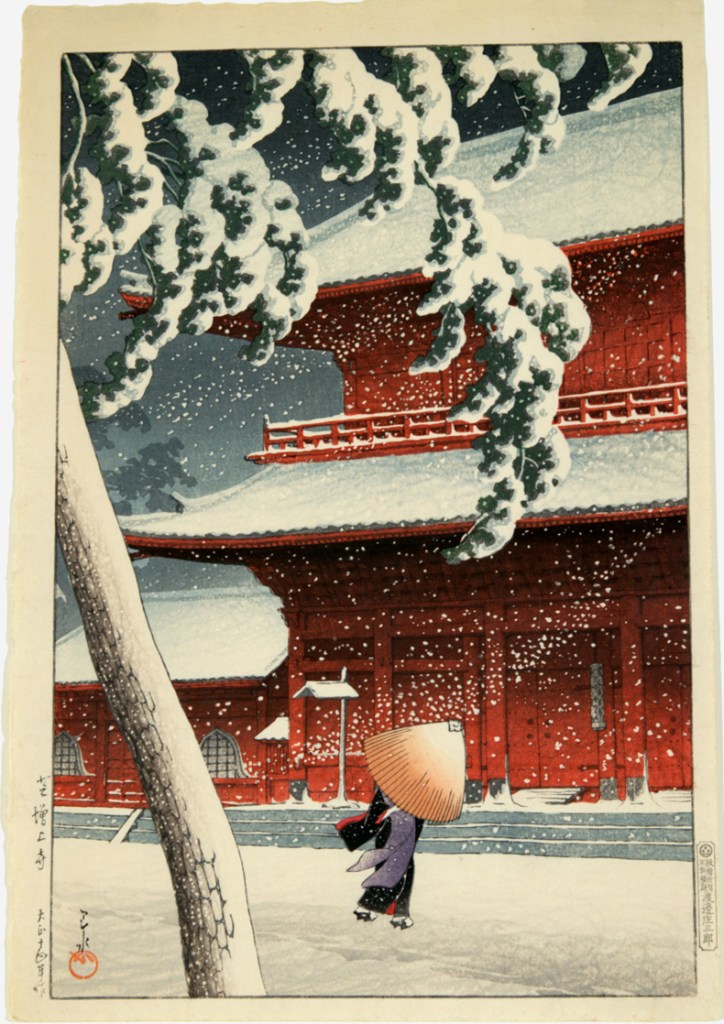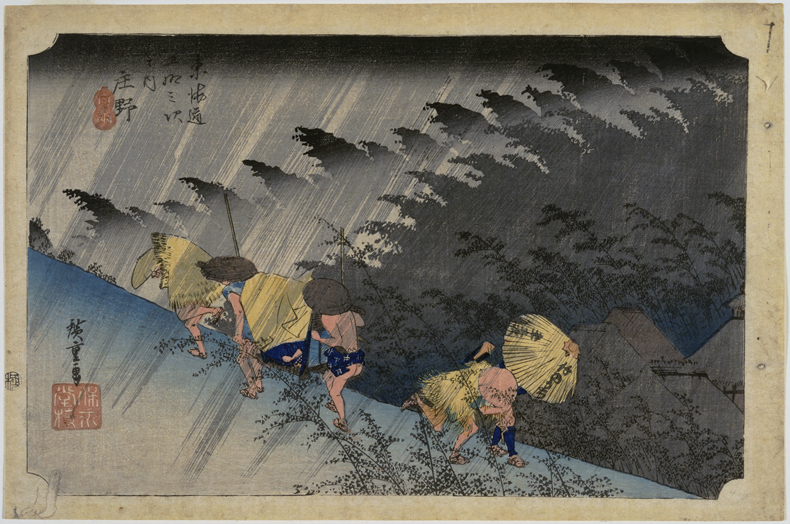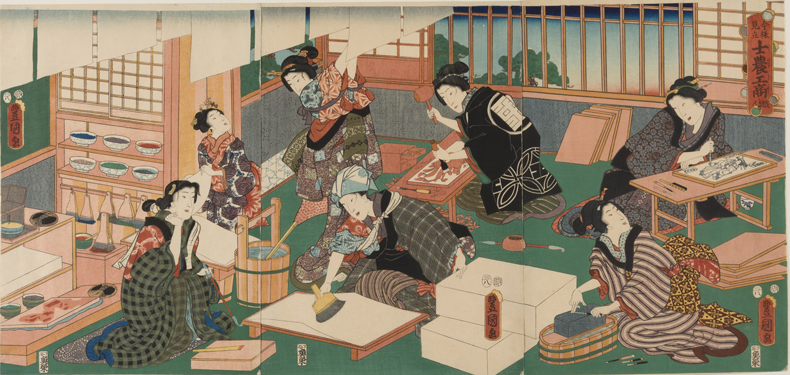Snow on the eaves of a red pagoda; a magnificently clad soldier wielding a halberd on a wooden bridge beneath a full moon; rain-lashed travellers marching up a blue hill – all kinds of dramatic scenes were captured on ukiyo-e, the woodblock prints and paintings that Japanese artists made during the Edo period (1603–1868). This exhibition at the Hammer Museum comprises some 80 prints from its own collection, including one of Hokusai’s 36 Views of Mount Fuji (1831–33) and several works by Hiroshige that demonstrate his arresting use of ultramarine (30 August–30 November). Particularly pleasing is a work of 1857 by Utagawa Kunisada that depicts seven women making woodcuts in a workshop. As the women engrave, prepare their surfaces and hang works from the ceiling, we are given a detailed sense of the craftsmanship and collaboration that went into making such intricate prints.
Find out more from the Hammer Museum’s website.
Preview below | View Apollo’s Art Diary
 The Temple Zōjōji, Shiba (1925), from the series Twenty Views of Tokyo by Hasui Kawase. UCLA Grunwald Center for the Graphic Arts, Hammer Museum, Los Angeles
The Temple Zōjōji, Shiba (1925), from the series Twenty Views of Tokyo by Hasui Kawase. UCLA Grunwald Center for the Graphic Arts, Hammer Museum, Los Angeles
 Driving Rain (1833–36), from the series Fifty-Three Stations of the Tōkaidō by Utagawa Hiroshige. UCLA Grunwald Center for the Graphic Arts, Hammer Museum, Los Angeles
Driving Rain (1833–36), from the series Fifty-Three Stations of the Tōkaidō by Utagawa Hiroshige. UCLA Grunwald Center for the Graphic Arts, Hammer Museum, Los Angeles
 Untitled (Japanese Women Making Woodcuts) (1857), Utagawa Kunisada. UCLA Grunwald Center for the Graphic Arts, Hammer Museum, Los Angeles
Untitled (Japanese Women Making Woodcuts) (1857), Utagawa Kunisada. UCLA Grunwald Center for the Graphic Arts, Hammer Museum, Los Angeles


AloJapan.com